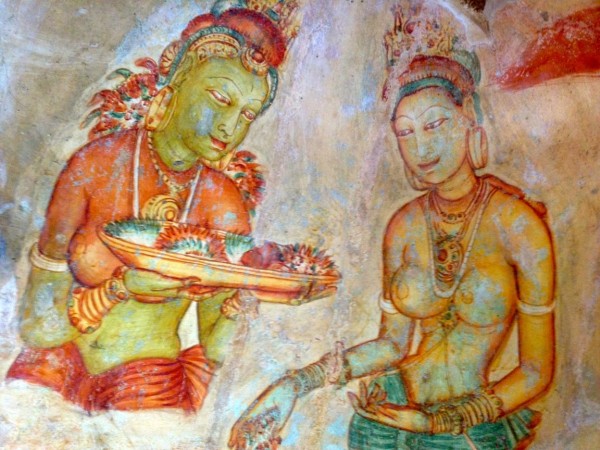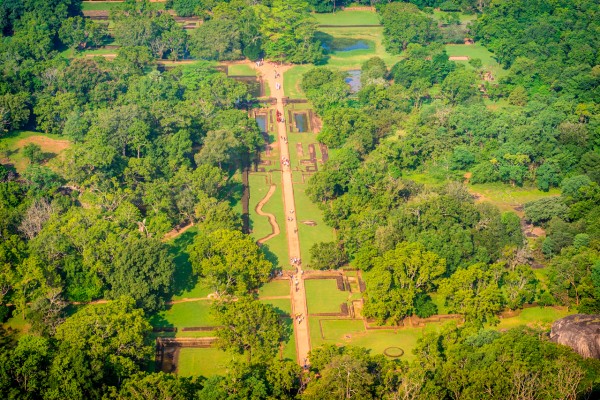An astonishing fortress built on top of a massive rock about 200 meter high in the Matale district, near the town of Dambulla Sigiriya is undoubtedly the most popular tourist attraction in Sri Lanka. Built by the short lived King Kashyapa (477 - 495 AD), Sigiriya is decorated with frescoes on the sides, a water garden in the front and a lion shaped gateway. There are about 1,200 steps to climb to reach the top of Sigiriya, and it's best to climb either early in the morning around 6.00 AM or in the afternoon when the sun is not harsh.
The story behind Sigiriya is pivoted on a conspiracy to overthrow King Dathusena in 477 AD. Kashyapa was the son of King Dathusena and a non-royal consort of him. Migara was the commander of the army for King Dathusena and also the nephew of the King. Being not the rightful heir for the throne Kashaya alone with Migara conspired to overthrow his father. Fearing for his life the rightful heir Moggallana, another son of King Dathusena fled to South India for refuge. Knowing that Moggallana would return to gain the throne, King Kashyapa moved his kingdom to Sigiriya and built this massive complex including the palace, gardens, and defensive structures.
According to Culavamsa King Dhatusena was killed by walling him up alive. In 495 AD Moggallana returned to Sri Lanka with an army to regain the throne. During the battle King Kashyapa’s army abandoned him leaving him of no other choice to suicide. The folklore says that the Kashyapa riding the battle-elephant took a strategic move but the armies misinterpreted that the king had opted to retreat, and left him in the battle field and retreated. The king then took his dagger, and cut his own throat and fell dead. Mogallana returned to Anuradhapura and made his capital there, and converted Sirigiya to a Buddhist Monastery.
Frescoes
According to John Still, most of the western face of Sigiriya might have been covered with paintings. It could have been the world's largest painting too, covering an area of 5600 square meters, 140 meters long and 40 meter high. There are references that about 500 ladies were in these paintings, however most of these are lost forever. The paints are unique in style when compared to other artworks from the same era.

Mirror Wall
It was believed that this wall was well polished so the king could see himself while walking alongside. The wall is covered with verses of poems dating back to the 8th century scribed by visitors. These poems are on various subjects including love, irony, happiness. There are 685 poems written in 8th, 9th and 10th centuries deciphered by the late Senarath Paranavithana, Archaeological Commissioner of Ceylon.
Gardens
The gardens in front of Sigiriya are one of the most important elements of the complex. These symmetrically built gardens are among the oldest landscaped gardens in the world. There are water gardens, boulder gardens and terraced gardens. The gardens have complex irrigation systems with underground conduit networks and water fountains. The octagonal pool with a raised podium is interesting to check out.

- {{ listing.node.ViewsText }}
- {{ listing.node.FavsText }}
- {{ listing.node.ThumbsText }}
Places to eat near Sigiriya
Explore More

{{ listing.node.Title }}
- {{ listing.node.ViewsText }}
- {{ listing.node.FavsText }}
- {{ listing.node.ThumbsText }}
Places to stay near Sigiriya
Explore More

{{ listing.node.Title }}
- {{ listing.node.ViewsText }}
- {{ listing.node.FavsText }}
- {{ listing.node.ThumbsText }}
Things to do near Sigiriya
Explore More





